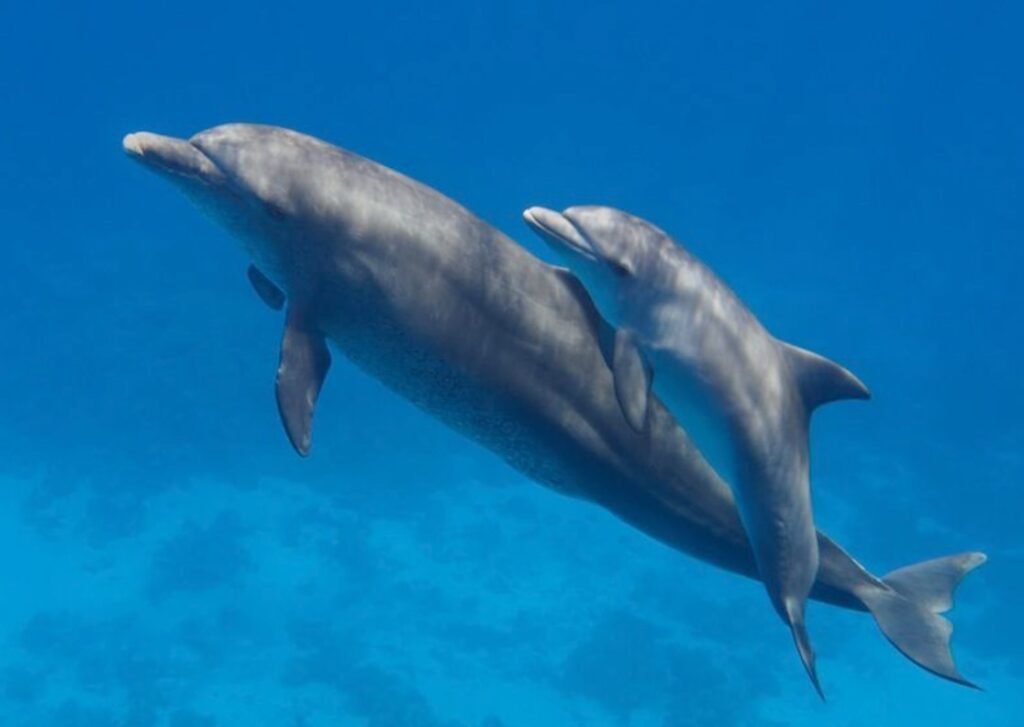Dolphins are usually seen as friendly and intelligent animals, but they have a dark side that may surprise you. Scientists have discovered that bottlenose dolphins are targeting and harming baby manatees in the Caribbean, for reasons that are not clear.
A team of researchers from the International Foundation for Nature and Sustainability (FINS) and Florida International University published a study on Jan. 10 in the journal PLOS One, documenting 10 cases of aggressive interactions by bottlenose dolphins towards Antillean manatee calves. The attacks occurred near Belize, over a span of 21 years, from 1999 to 2020. The majority of the incidents happened between 2015 and 2020.
The researchers observed dolphins trying to separate calves from their mothers, and harassing, ramming and biting them. In each case, the dolphins initiated the contact. The researchers also found tooth marks on orphaned calves that matched the spacing of dolphin teeth, indicating that they had been assaulted by dolphins.
Dolphins do not eat manatees and why they act this way with another species is unclear, said study lead author Eric Angel Ramos, a scientist at FINS. He suggested that dolphins may be curious about manatees, and display their natural aggression towards them, as they do with other dolphins.

Dolphins are not always nice
Dolphins are known to have complex emotions, social structures and cultures. They can cooperate, communicate and learn from each other. They can also show empathy, grief and altruism. However, they can also be violent, both within and across species.
Dolphins have been recorded killing other dolphins, as well as harbor porpoises, for no apparent reason. They have also been accused of sexually coercing and isolating female dolphins, and even raping humans. Some researchers have suggested that dolphins may kill for fun, dominance or boredom.
Around the world we see bottlenose dolphins literally acting like jerks and being violent with other species, said study senior author Jeremy Kiszka, a biological science professor at Florida International University. He added that he was confident that the dolphins wanted to inflict death on the manatees.
A threat to endangered manatees
Manatees are gentle and slow-moving herbivores that live in shallow coastal waters. They have no natural predators, except for humans, who pose the biggest threat to their survival. Manatees are often injured or killed by boat strikes, fishing gear, habitat loss and pollution. They are also vulnerable to climate change, which affects their food sources and migration patterns.
Antillean manatees are a subspecies of the West Indian manatee, and are found in the Caribbean and parts of Central and South America. They are classified as endangered by the International Union for Conservation of Nature (IUCN), and their population is estimated to be less than 2,500 individuals.
The dolphin attacks add another pressure to the already threatened manatees, especially the calves, who depend on their mothers for the first two years of their lives. The researchers warned that if the dolphin aggression continues or increases, it could have serious consequences for the manatee population.
The role of environmental factors
The researchers are not sure what triggers the dolphin attacks, but they speculated that it could be related to environmental factors, such as food availability, habitat degradation or climate change. These factors could cause the dolphins and manatees to overlap more in their habitats, and compete for resources.
The researchers also noted that the dolphin attacks could be influenced by human activities, such as tourism, fishing and boating, which may alter the behavior and stress levels of both species. They called for more research and monitoring to understand the causes and impacts of the dolphin aggression, and to develop conservation strategies to protect the manatees.
